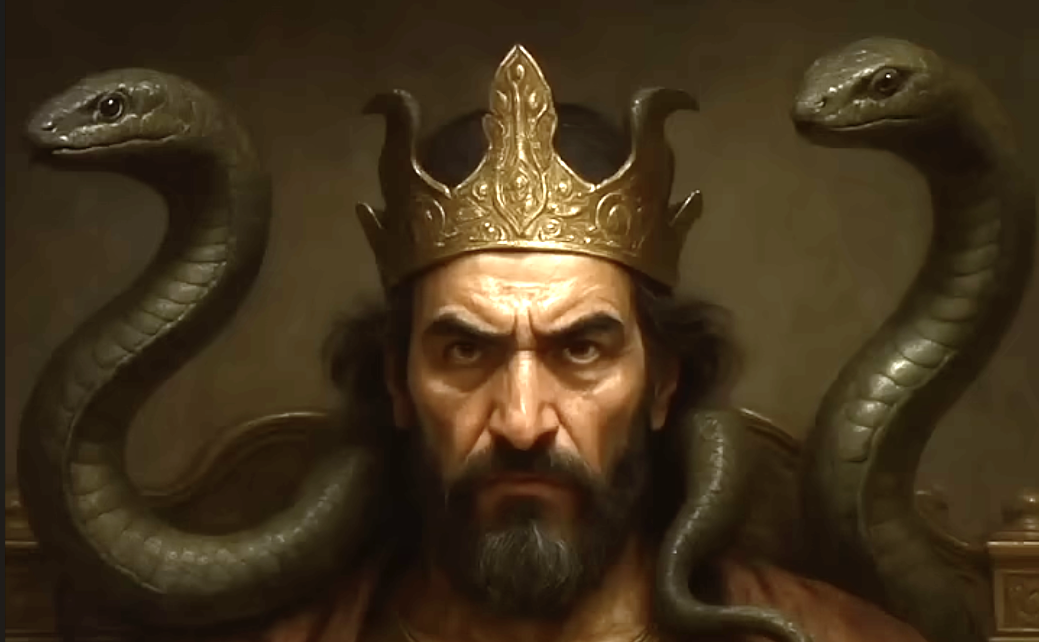Snakes, Kings, and Ancient Prophecy: Discovering the Epic World of the Shahnameh

In an era where epic storytelling dominates our screens and bookshelves—from the political betrayals of Game of Thrones to the sweeping universes of Dune, The Lord of the Rings, and Marvel's sprawling multiverse—one masterpiece remains curiously overlooked in the West: the Shahnameh.
Often called “Iran’s national epic,” the Shahnameh (The Book of Kings) is a monumental literary work composed over 1,000 years ago by the Persian poet Ferdowsi. Stretching across more than 50,000 rhyming couplets, it’s one of the longest epic poems ever written, chronicling the mythical and historical past of Iran from the creation of the world until the Arab conquest in the 7th century.
Despite its grandeur and literary richness, the Shahnameh remains a hidden gem to most non-Persian readers—a shame, because it offers an intoxicating mix of high drama, fierce battles, tragic love stories, divine interventions, and timeless political parables. Among its cast of unforgettable characters is Zahhak, a terrifying villain whose story still speaks powerfully to modern audiences.
A Crown, a Curse, and Two Serpents: The Story of Zahhak
The tale of Zahhak begins innocently, even familiarly. He is the ambitious son of an Arab king, susceptible to vanity and eager for power—traits that make him easy prey for the devil, who appears in disguise and begins whispering poisonous advice. Under this demonic influence, Zahhak commits patricide, seizes the throne, and begins his descent into tyranny.
Then comes the twist that cements Zahhak as one of literature’s most grotesque despots. As a reward for his obedience, the devil kisses him on both shoulders—and from those cursed spots sprout two black serpents. Zahhak is horrified, but nothing can remove them. In a grotesque development, it is revealed that the only way to soothe the serpents is by feeding them the fresh brains of young men—daily.
Thus begins a reign of terror that lasts for centuries. Zahhak transforms into a monster—visually, politically, and morally—consuming the youth of the kingdom to preserve his cursed rule. His court becomes a place of fear, obedience, and bloodshed.
But even the most fearsome tyrants inspire resistance. And so emerges one of the most powerful figures in the Shahnameh: Kaveh the blacksmith. When Zahhak’s soldiers come to take Kaveh’s last remaining son, the grieving father has had enough. In a courageous act of defiance, Kaveh refuses to sign a false document praising the king, tears it apart in front of the court, and storms out of the palace.
Outside, Kaveh rallies the people. With no banner to raise, he lifts his leather apron—a symbol of the working class and a powerful visual metaphor for rebellion. This “Derafsh-e Kaviani,” or Kaviani Banner, would later become a legendary flag of resistance in Persian lore.
Under Kaveh’s leadership, the people unite behind a hidden prince named Feraydun, long prophesied to overthrow Zahhak. In a final, decisive confrontation, Feraydun defeats the tyrant. But rather than kill him, he chains Zahhak to the side of a mountain, cursed to live in eternal torment—a warning to future rulers and a poetic kind of justice.
A Universal Epic in a Persian Frame
The story of Zahhak is one of the Shahnameh’s most iconic chapters, and it exemplifies why this epic endures. At its heart, it’s a parable about the corrupting nature of unchecked power, the complicity of silence, and the courage of ordinary people to resist evil. Themes like these transcend time, geography, and language.
Yet for all its relevance and literary beauty, the Shahnameh remains underexplored in the global mainstream—especially when compared to the attention lavished on Norse, Greek, or even Mesopotamian mythologies. This is slowly changing. In recent years, translations, adaptations, and academic interest have grown. Artists and animators have begun experimenting with Shahnameh-inspired works. But much remains to be done to bring Ferdowsi’s masterpiece into wider circulation.
Part of the epic’s underexposure may lie in its sheer scope and poetic density. Ferdowsi spent over three decades composing the Shahnameh in classical Persian verse. His goal was not only to preserve Iranian identity under the shadow of Arab conquest but to revive the glories of a pre-Islamic Persian past—Zoroastrian kings, heroic warriors, and legendary sages. He succeeded. The Shahnameh became a cornerstone of Iranian culture, recited in gatherings, illustrated in manuscripts, and passed down through generations.
Why Read the Shahnameh Today?
In a world increasingly drawn to stories about resistance, identity, and the shadow of tyranny, the Shahnameh feels more vital than ever. It's not just a tale of kings and monsters. It's about what happens when people give up their agency—or fight to reclaim it. It explores the tension between fate and free will, the burden of leadership, and the resilience of hope.
If you’re a lover of epic fantasy, political intrigue, or simply great storytelling, the Shahnameh offers all the grandeur of Tolkien, the psychology of Shakespeare, and the mythic resonance of Homer—with a distinctly Persian flavor.
So the next time you're scrolling for your next great read or binge-worthy story, consider looking not to the future, but a thousand years into the past. Open the pages of the Shahnameh, and you’ll find a world as rich and relevant as anything in contemporary pop culture—a world where even a blacksmith can change history, and where tyrants, no matter how powerful, always meet their end.

